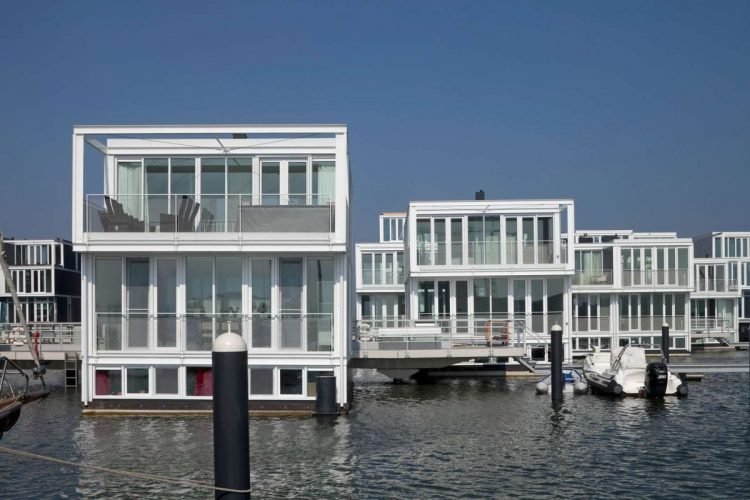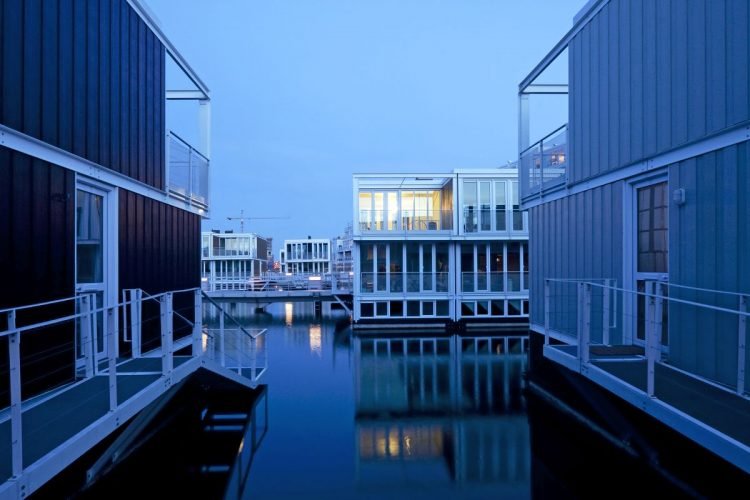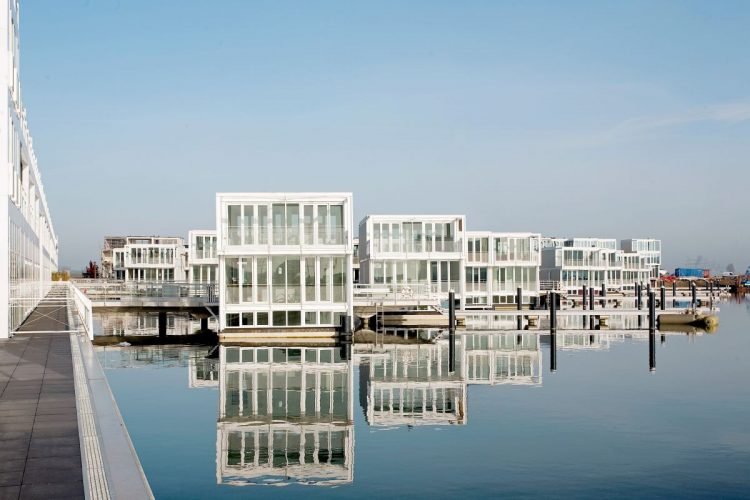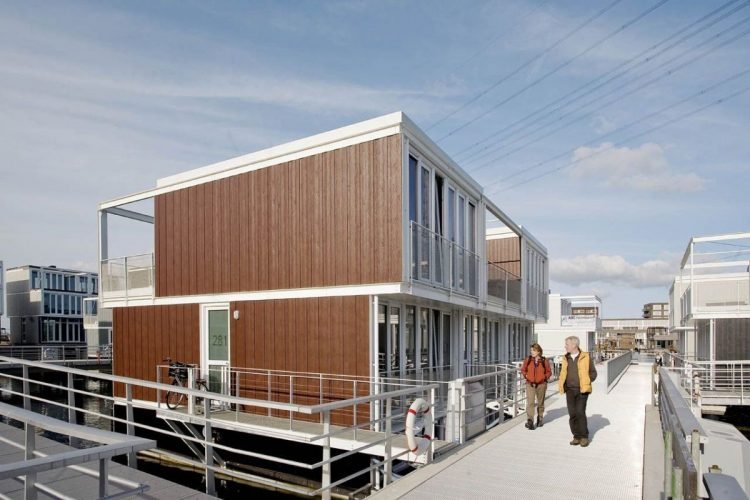Melting Icecaps and global warming being a serious concern have gained a lot of attention from architects and designers worldwide to find a more sustainable and innovative solution towards this rising problem. Waterbuurt (Dutch for ‘water quarter’) is one of those fine solutions that changed people’s thinking patterns and highly influenced their way of living in Amsterdam.

Waterbuurt is state of the art household community which has crawled its way to not being ordinary but extraordinary because these are no usual houseboats but real floating houses. There are almost 100 homes docked up in Lake Eimer adjacent to wharves moored to steel pilons so they only float in the vertical direction along with the changing tide.

A Dutch architect Marlies Rohmer initiated the floating house concept with a design approach of keeping things simple and user-friendly; ‘no-nonsense, basic design.’ It’s not only about living within the four walls but about the experience, it generates for its users.
These houses were initially built at a shipyard 65km north of Eimer Lake and then carried through various canals. This project is still in progress, but it captured the people’s attention so much that most of them are already occupied.

Considering the spontaneous climatic changes, it is safe to say that living on a water body is a safer option than living on land, especially in Europe. Also, considering the fluctuations in prices of land homes in urban areas like Amsterdam. Hence, choosing to live on the water is more affordable than an aquatic architecture visionary Koen Olthuis.
Koen Olthuis desired all the designed urban components to stay there for at least 50 to 70 years, and that is only possible when the design is flexible enough to adjust through the changes; designing and building the houses in a manner where it promises flexibility, reliability, affordability, adaptability, and comfortability. As Koen said, “it’s all about reinventing our cities, so they function better.”

It was definitely a challenge to ensure a land routine on water, but Waterbuurt represents not only being possible but being a preferable project.
These floating homes are built while keeping in mind all possible adaptability factors; therefore, a light steel frame has been incorporated and built over a strong submerged concrete platform.
Regarding the layout, the bedrooms and bathrooms are located on the partially flooded lower floor, while the living area and terrace on the top floor provide the best view possible. The dining and kitchen were, however, relocated on the slightly raised ground floor.
There are many luxuries and extras that a buyer can also desire and opt for while buying the floating home. It is one of its kind project in Ijburg District, restricting to floating homes and planning to expand the network with the idea of introducing floating parks and floating skyscrapers.


